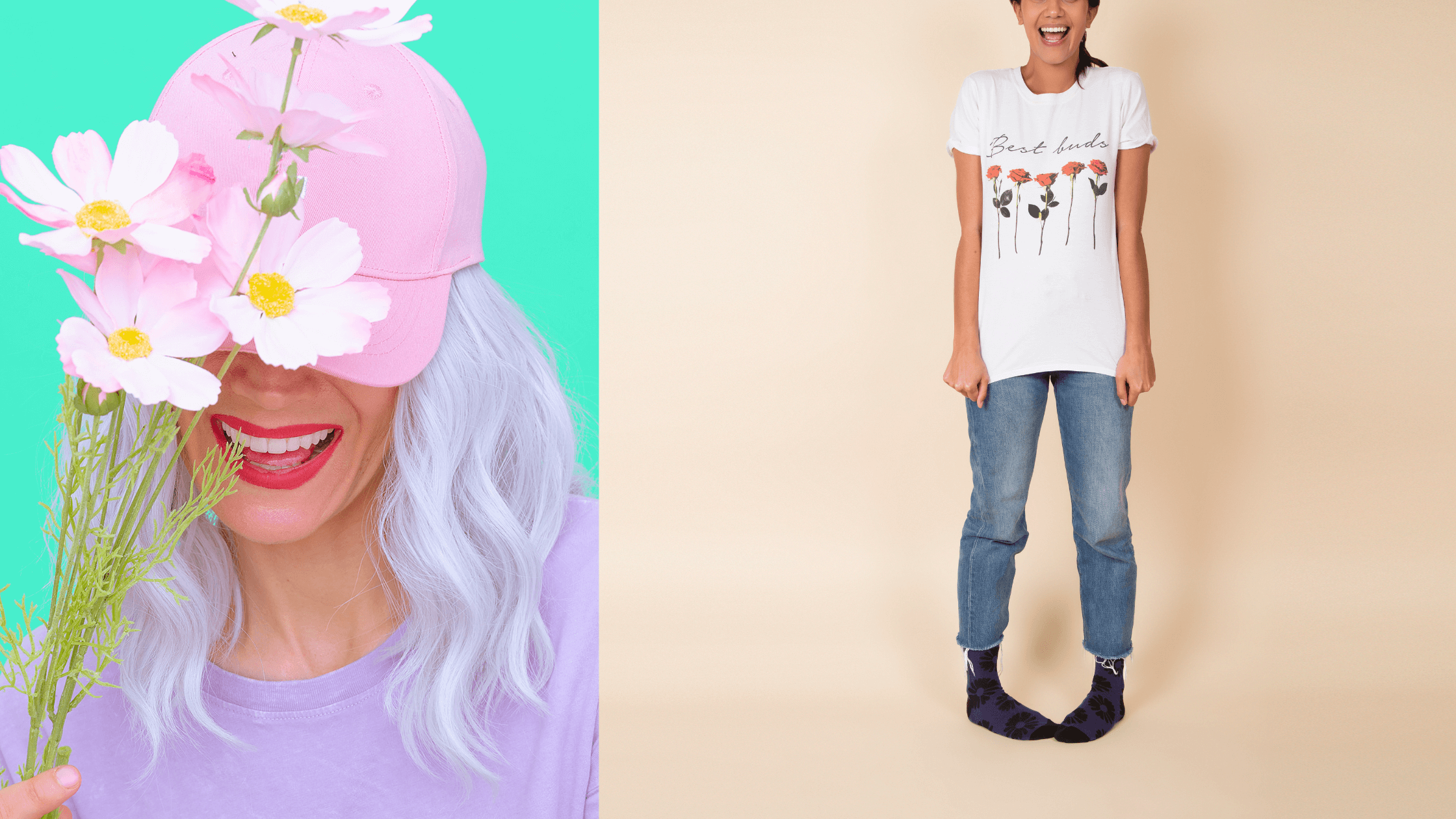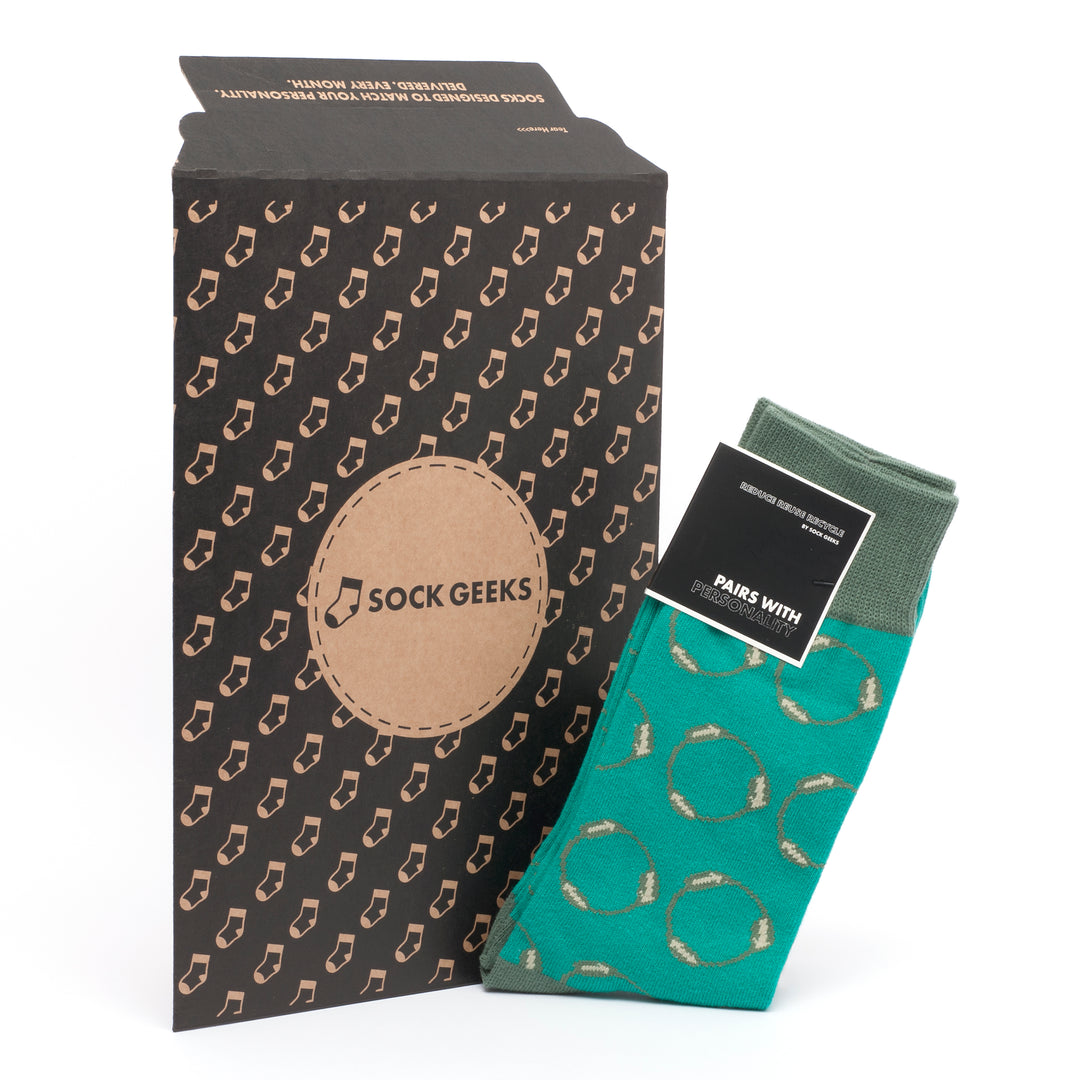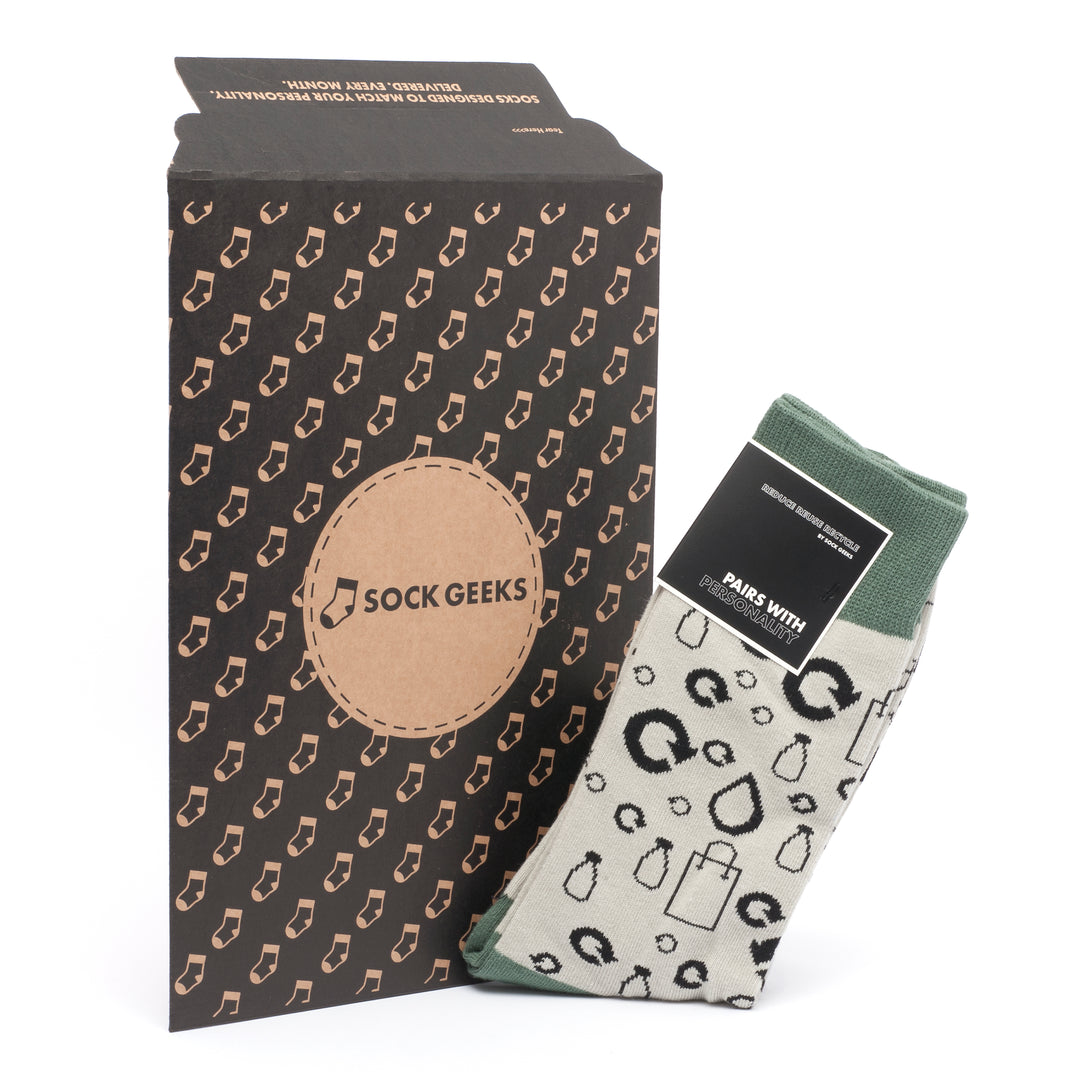Eco-Friendly Sock Dyeing Techniques
Key Takeaways
-
Chemical dyes for traditional sock manufacture account for an enormous amount of polluted water, soil and air, harming both ecosystems and communities where they’re produced.
-
Low-tox dyes, sourced from natural or safer synthetic equivalents, provide a quantifiable reduction in environmental damage and encourage the movement towards a more sustainable textile industry.
-
Opting for organic cotton, ethical wool or recycled fibres lessens the impact, too, with sourcing and sustainable methods key to materials.
-
Sustainable dyeing and finishing techniques like water-efficient processing and non-toxic finishes are crucial for minimising resource use and chemical exposure along the manufacturing chain.
-
Even better for the planet (and your health) is to follow up with low-temperature washing, gentle detergents and air drying.
-
Transparency, innovation and continuous improvement in the sock industry are essential to grow trust, drive positive change, and provide ethical, environmental options for consumers worldwide.
Low-tox sock dyes use fewer noxious chemicals and safer colour agents that work to reduce potential skin irritation and environmental damage. These dyes commonly replace heavy metals and toxic solvents with natural or less hazardous synthetic alternatives, conforming to strict safety regulations in the industry. This is why many makers opt for low-tox dyes to support skin comfort, reduce breakouts and provide an earth-friendlier option for skin-sensitive customers (or those keen to keep their footprint small). In this post, we explore low-tox sock dyes, why they are important for health and the environment, and how you can choose the perfect daily socks.
The Hidden Cost of Colour
Synthetic and natural dyes have been defining the appearance and texture of textiles for centuries. The price of vivid colours goes far deeper than the surface. The path from chemical vats to finished socks can mark water, soil, air and health. Knowing about these effects is key for consumers and industry.
1. Waterway Contamination
-
Dyes from textile factories frequently run into local rivers and lakes. These effluents hold heavy metals, azo compounds and other poisons for decades.
-
Aquatic life suffers as oxygen levels decline and toxins accumulate. Fish numbers dwindle, algae spores multiply, and the equilibrium of the ecosystem is torn asunder. In parts of the world, rivers close to dye works have turned unnatural hues and lost much of their wildlife.
-
For communities dependent on these water sources, the cost is felt in multiple ways. Clean water is short, fishing is affected, and water treatment bills mount. Local economies can fail as well.
-
There should be stricter regulations for wastewater treatment globally. Some countries have begun to restrict certain chemicals in textile effluent, but enforcement and international coverage is patchy.
2. Soil Degradation
Chemical runoff from dyeing plants can leach into soil, altering its composition and making it less productive. Heavy metals like lead or cadmium in some dyes are slow to disintegrate, damaging plant growth and rendering crops inedible. Dye waste fields may grow less food over time, imperilling local food security and decreasing biodiversity as native plants fail to thrive.
Sustainable practices such as low-tox or plant-based dyes help to preserve soil health. These alternatives break down safely and do not contribute hazardous materials to the soil. Stopping soil from eroding exists in how we deal with waste and steward the land surrounding dyeing plants.
3. Air Quality
Dye manufacture can release fine particulate, volatile organic compounds and sometimes even smog-forming gases into the air. When workers and local residents inhale this air, it triggers breathing problems, headaches and long-term lung damage. It’s a greater danger in lightly regulated or outdated facilities.
Cleaner processes equate to closed systems, improved filters and more benign chemicals. Some factories are now switching to water-based dyes, or deploying renewable energy to curtail airborne emissions.
4. Human Health Risks
Toxic dyes can induce skin rashes and allergies in those who wear them – or make them. Once upon a time, fabric workers sickened by inhaling white arsenic or working with mercury- and lead-based dyes. Certain pigments (including azo dyes) can degrade into cancer-linked or organ-damaging compounds, though not all researchers concur on what the risk is.

Bringing awareness to dye safety protects consumers from harmful products. Wearing low-tox socks and clothes reduces these risks and encourages healthier lives.
5. Energy Consumption
Conventional dyeing consumes energy and water, creating huge bills and emissions. Low-tox dye processes tend to operate at lower temperatures and use less water, so less power is required. Some textile factories now use solar or wind for energy to help reduce their footprint further. Innovations such as dyeing with supercritical CO₂ demonstrate how energy consumption in textiles can continue to decline.
What Are Low-Tox Dyes?
Low-tox dyes (or non-toxic dyes) are dyes used on textiles such as socks which prevent or eliminate harmful chemicals. They’re formulated to be safer for people and planet, cutting down on health risks and the migration of harmful chemicals from clothes. With more people caring about sustainability, these dyes have become a key focus for brands and shoppers looking for safer options.
Natural Sources
Plant-based dyes are derived from plants, roots, leaves, fruits and even minerals. Indigo, for example, is derived from the indigofera plant, madder root gives red, and turmeric produces a yellow shade. Iron and clay create earthy shades as well. These sources are renewable, frequently cultivated without the use of harsh chemical fertilisers or pesticides, so they can be incorporated into a low-impact supply chain.

Their use of vegetable dyes often supports local farmers and helps make the dyeing process less polluting. Unlike most synthetic dyes, natural dyes decompose in nature and typically do not add toxins to water streams. Yet not all natural dyes are innocuous; logwood, for example, can be mildly toxic but, properly used, remain low-risk. Plant dyes for socks and shirts is now common among global brands,” says People Tree and PACT. With plant-based dyes more accessible now than ever, consumers can search for “plant-dyed” or “botanical dye” on labels, in turn favouring lower-impact alternatives.
Safer Synthetics
Synthetic dyes have historically been favoured for their durability and vividness. The problem is, many (such as azo dyes) have health-risk compounds, including those associated with cancer. Newer low-tox synthetic dyes are designed to decompose more readily, to use safer materials, and to omit the nastiest toxins. They concentrate on water-based techniques and steer clear of heavy metals or toxic solvents.

Low-tox synthetics are safety-checked, including under OEKO-TEX® or GOTS standards, and are less likely to irritate, or endanger, workers. Brands such as Organic Basics and Colorifix are working on safer dyeing and are transparent about their supply chains – so buyers can know what’s in their socks. It makes it easier when brands display their dye sources and processes on labels/online as well, so consumers can vote with their wallets.
The shift towards safer synthetics is slow but on the up, particularly as buyers are increasingly demanding evidence of ‘clean’ and ‘safe’ practices. There’s less risk of polluting waterways and fewer toxic by-products. Although some low-tox synthetics may fade faster, the health and environmental gain is obvious for those that prioritise those things.
The Core Difference
Conventional dyes commonly rely on toxic chemicals, which damage waterways and are dangerous for the people who make or wear the products. Low-tox dyes reduce this risk by using safer raw materials and cleaner waste streams. Dye houses that use low-tox methods, for instance, might recycle water or have closed systems that keep run-off out of rivers.
Low-tox dyes contribute to a more sustainable fashion system. They can require less water, need less energy, and decrease chemical waste. By being aware of what goes into the dye, consumers can choose socks and clothing that align with their principles. A few brands reveal this info on pack, but not all, so it’s worth reading labels and asking questions.
Understanding dye types allows consumers to choose wisely. For those wanting safe, fair products, it’s worth looking out for third-party certifications or asking brands about their dyeing process.
Our View on Sock Sustainability
Sock sustainability is about more than just fabrics and dyes. It addresses sock production, the materials involved and how consumer decisions influence the sector. A full perspective considers longevity, ethical supply chains, and all the little things that contribute to real change.
Beyond Certifications
GOTS or OEKO-TEX certifications can help identify brands that are committed to low-tox dyes and better processes, but a badge is not everything. Not all certifications inspect all segments of the supply chain - some target dyes, others fair work or agricultural practices. That means a green-labeled sock could still be lacking elsewhere, in terms of waste or fair pay, for example.
For the bigger picture, check out what the brand does, not just what’s on the label. Brands like a report on water use growing cotton or go into detail about how they cut down energy making recycled polyester socks. Recycled polyester, for example, can conserve 50% energy against producing new fibres and keeps plastic out of landfill. Organic cotton uses far less water than conventional cotton, which is essential as water stress increases worldwide. Only brands transparent about their process allow you to verify these assertions.
Demanding brands be clear on where they source their cotton, how they treat workers and what their dyes are made of allows consumers to make more informed decisions. It inspires confidence. The best brands demonstrate their entire supply chain, from farm to finished sock, all with more than just a logo.
The Myth of Perfection
No sock is perfect, even if it ticks many boxes. Certain brands will use recycled fibres, but still have barriers in terms of shipping or dye safety. The solution is to back brands that continue to learn and share both their successes and failures.
Progress > perfection A sock that endures year after year reduces waste, even if it isn’t 100% environmentally friendly. For example, organic cotton or recycled socks keep feet warm in winter and cool in summer, meaning they’re more practical and less likely to be disposed of quickly. One good pair is more planet-friendly than five “lifecycle” pairs that wear out in a matter of months.
If brands speak up about what they’re attempting – for example, using less water, or transitioning to low-tox dyes people can learn with them. This transparency supports the rest of the industry.
A Call for Transparency
Brands should be transparent in how they dye, sew and ship socks. Which means disclosing information about water consumption, chemicals, and pay. Shoppers can then balance this with the facts and choose brands that look after people and the planet.
Brands that share clear info, buyers trust. Category trust in brands. This trust makes it more likely for people to choose sustainable socks – a little but important step for a greener world.
Collaboration can elevate the standard for all. Brands exchanging ideas – for example, methods for washing dyes out with less water – can advance the industry as a whole.
Openness helps all.
The Eco Sock Manufacturing Process
Eco sock production marries sustainable fibre selection, low-tox dyeing and ethical finishing stages. All work to minimise environmental impact, conserve resources, and promote safe, fair working conditions. Brands are crucial to the industry’s efforts by opting for smarter options at every stage.
Fibre Selection
Fibre selection is the first, and perhaps the most important, step. Organic cotton is a clear winner when it comes to water usage too, using up to 91% less water than regular cotton. Its growth shuns nearly all synthetic pesticides, which is significant because conventional cotton agriculture utilises around 25% of all pesticides used in the world. Recycled polyester, made from used bottles or worn-out garments, reduces waste and energy consumption – up to 50% less energy goes into producing new polyester. Not only does this reduce carbon footprint, but it prevents plastic reaching landfill. Wool is another good option, provided it’s sourced from farms with animal welfare and land management standards. Brands need to examine where fibres originate, their effect on water, chemicals, waste, and their longevity. Great fibre selection assists circular economy objectives, with recycled materials cutting down on the necessity for new resources. After all, the right fibre selection can dictate the sock’s print from A to Z.
Dyeing Method
-
Natural dye baths: Soaking fibres in plant-based colour solutions
-
Low-impact synthetic dyes: Reduces harmful chemicals and toxins
-
Waterless dyeing: Uses air or CO₂ to set colour, saving water
-
Digital printing: Applies patterns directly, reducing dye waste
-
Steaming methods: Uses heat and steam to fix natural dyes
Low-tox dyes are critical when it comes to dyeing, as they reduce hazardous runoff and keep workers and the environment safe. Brands that invest in water-saving dyeing techniques such as waterless dyeing or steam fixation do much to tackle pollution and reduce water consumption. These technologies can require less dye, cutting costs and waste. Water-efficient dyeing is about more than saving resources – it helps brands comply with stricter environmental regulations and bolsters healthier communities near production sites.
Finishing Touches
The final stages, easy to miss, add up to a lot. Employing non-toxic finishes – such as plant-based softeners or natural anti-bacterial treatments – ensures socks are safer to wear and less hazardous to the environment when washed. Packaging is another thing to reconsider. Cardboard wraps from recycled paper, or compostable bags, are preferable to single-use plastics. Even small changes – such as printing using soy-based inks – make a difference. Quality control needs attention. Socks that last for years require fewer resources in the long run than multiple cheap pairs that wear out fast. Rough inspections at the end of production prevent waste and ensure consumer confidence.
Choosing Better Materials
Choosing better materials for sock dyeing and manufacturing is essential for low-tox seekers. Sustainable socks are designed by selecting planet-softer fibres and dyes that are skin-safe. For those looking to eliminate toxins from their lives, you could begin with what you put on every day – socks, for example. Opting for low-tox dyes and eco-friendly fibres means cleaner production, less waste and decreased exposure to harsh chemicals.
-
Opt for 100% natural fibres, particularly if you have sensitive skin.
-
Pick certified organic, recycled, or ethically sourced fibres.
-
Seek out brands that employ Oeko-Tex or bluesign certification.
-
Support brands that are transparent about their supply chains and dyeing processes.
-
Choose socks made to last to reduce waste.
-
Seek out transparency about dye ingredients and fibre origins.
Organic Cotton
Organic farming shuns synthetic chemicals, requires less water and nurtures soil health. The table below shows the main benefits:
|
Benefit |
Description |
|---|---|
|
Reduced Water Use |
Up to 91% less water than conventional cotton |
|
Lower Pesticide Use |
No synthetic pesticides or fertilisers |
|
Soil Health |
Crop rotation and organic matter improve soil |
|
Safer For Workers |
Fewer toxic exposures in growing and harvesting |
Organic cotton farming is good for the planet by using significantly less water and omitting chemical pesticides. This is significant because conventional cotton consumes a quarter of the planet’s pesticides and frequently causes water stress in rural regions. Organic farming maintains soils as richer and ideal for future crops.
Brands including Thought, Pact and People Tree specialise only in organic cotton socks. These brands provide a variety of colours and prints, with dyes that are free from harsh chemicals.
By championing organic cotton socks you are supporting a system that promotes soil and water health, safer work for farmers, and reduced chemical run-off.
Ethical Wool
Ethical wool comes from sheep that are raised with care, and where nothing cruel like mulesing goes on. Wool that calls itself “ethical” is frequently traceable to individual farms adhering to strict welfare codes.
By picking socks made from ethical wool, you’re backing farmers who give their animals improved lives. This entails more humane shearing, well-managed grazing, and no toxic chemicals on the land. It means you reduce man-made fibres, which can lose microplastics.
Multiple brands, including Smartwool and Darn Tough, make socks out of wool that’s sourced from suppliers certified by organisations like the Responsible Wool Standard. These are brands that reveal where their wool comes from and how the sheep are reared.
Opting for ethical wool socks keeps the focus on animal welfare, soil health and long-lasting fibres. This gives you visibility over the actual effect of your purchasing decisions.
Recycled Fibres
Recycled fibres take previous materials – either old textiles or plastic bottles – to create new yarn. This diverts rubbish from landfill and saves energy. For instance, producing recycled polyester consumes 50 per cent less energy than new polyester from oil.
Using recycled materials means less resources required for new socks. It reduces microplastic pollution from virgin synthetic fibres. Brands such as Girlfriend Collective and Swedish Stockings produce socks from recycled bottles and fabrics.
‘We’re seeing customers choose recycled socks because they want to shrink their footprint.’
Choose socks with recycled fibres for less waste, less energy, and a brighter tomorrow.
Extend Your Socks' Life
Extending the life of low-tox dyed socks is key for sustainability. Good quality socks made from organic cotton or even recycled polyester require fewer resources, help reduce waste and minimise your impact on the planet. Well taken care of, they reduce the rate of wear and tear, so you need a replacement less frequently. To support this, follow these practical tips for keeping your socks in top shape:
-
Wash less often to reduce friction and fibre loss.
-
Use cold water and softer detergents to retain the colours.
-
Air dry rather than tumble dry to protect elasticity.
-
Store socks flat or rolled to prevent fibres stretching.
-
Repair small holes or weak spots with simple sewing.
-
Put old socks to use as cleaning cloths or use them in crafts.
-
Opting for organic cotton or recycled polyester helps to make them last longer and have a reduced environmental impact.
-
Steer clear of bleach and fabric softener that can destroy fibres.
Wash Colder
Washing socks at lower temperatures, preferably under 30°C, saves energy and protects both fabric and dye. Washing on a cold cycle slows the breakdown of fibres, so your socks retain their shape and colour for longer. Crucial for organic cotton or recycled polyester socks, which prefer the delicate touch. Washing with cold reduces electricity usage, thus reducing carbon emissions and household bills.
Switching to cold washes doesn’t mean you skimp on cleanliness. (These days, most detergents are effective at lower temperatures, banishing dirt and bacteria but soft on fabric.) By changing your laundry routine and washing at a lower temperature, you are doing your bit to lessen your environmental impact. This little step, multiplied by many, could result in serious energy savings worldwide.
Gentle Detergents
Mild detergents, particularly eco-friendly or plant-based ones, safeguard your sock fibres and dyes. Strong chemicals can fade colour and damage fabrics, resulting in premature damage. When shopping, look for third party certifications or transparent ingredient lists, and stay away from optical brighteners or synthetic fragrances. Brands like Ecover and Seventh Generation provide eco-friendly alternatives for natural and synthetic fibres.
Opting for the correct detergent will keep your socks soft and prevent skin irritation – crucial for those with allergies or sensitive skin. It backs its low-tox ethos by steering clear of toxic runoff into waterways. Monitoring detergent selection is an easy but powerful way to make laundry practices safer and greener.
Air Dry
Another very effective way of reducing domestic energy consumption is to air dry socks. Dryers are energy hogs, plus they ruin socks’ elastic and fabric, making them fit poorly. Hanging socks on a rack or line will keep them in good shape, avoid shrinking, and ensure they'll last you through many more washes.
Preserving a sock’s shape is simpler when you dry them on the air-line, for example, since you don’t get the excessive heat that degrades fibres. This minimises sock replacements over time. Better for the planet and for your pocket. Making air drying a habit allows every pair of socks to live its full, intended life.
Sock Geeks & Sustainable Sock Dyeing
At Sock Geeks, sustainability isn’t a slogan it’s stitched into every pair. Our mission is to create bold, fun, and skin-friendly socks that don’t cost the Earth. That’s why we’re embracing low-tox dyeing techniques using OEKO-TEX® certified processes, plant-derived pigments, and energy-efficient methods. Each sock is crafted with care from organic cotton, ethical wool or recycled fibres to reduce water use, chemical exposure and your environmental footprint. Because when socks are dyed responsibly and made to last, they become more than accessories they become a stand for the future. Explore our ethical collections where colour meets conscience and comfort meets cause.
Conclusion
Low-tox sock dyes reduce nasties, protect skin, and do good for the planet. Makers today fix colours with plant dye, salt and water. They’ve cottoned on to cotton, bamboo or hemp for soft, tough socks. These measures conserve water and reduce waste. Washing socks cool, drying flat and mending holes can keep pairs going. Shops display greater low-tox sock varieties, so buying better becomes a doddle. To make the switch, research dye types, fabric origin, and care advice prior to purchase. Every little helps! With transparent facts, straightforward steps and ‘better’ picks, everyone can wear ‘socks that look good and do good’. To begin with, wear one pair next time and sense the difference.
Frequently Asked Questions
What are low-tox sock dyes?
Low-tox sock dyes are less toxic than traditional ones. They limit toxic residue on socks and environmental damage during manufacturing. These dyes are safer for both your body and the planet.
Why should I choose socks with low-tox dyes?
Low-tox sock dyes are kinder to sensitive skin. They stop irritation and allergies. By opting for them you’re backing sustainable production and lessening water contamination.
How do low-tox dyes affect the environment?
Low-tox dyes consume less water and energy. They discharge less toxic chemicals into waterways and lessen the total carbon footprint of sock production. That protects ecosystems and communities across the globe.
Are low-tox dyed socks as durable as regular socks?
Low-tox dye socks can be just as tough and enduring as their conventionally dyed counterparts. Quality relies on the whole production process, not simply the dye.
How can I check if my socks use low-tox dyes?
Seek out third-party certifications like OEKO-TEX® or GOTS. These labels indicate that the socks comply with rigorous chemical safety regulations, resulting in low toxicity.
Do low-tox dyes cost more?
Low-tox dyed socks are a little pricier thanks to safer processes and testing. The health, comfort and environmental advantages often make it worth the cost.
Can I recycle socks dyed with low-tox dyes?
Low-tox dyed socks are indeed generally easier to recycle or compost, given they contain less harmful chemicals. Be sure to research your local recycling guidelines so you know how to dispose responsibly.




















Leave a comment